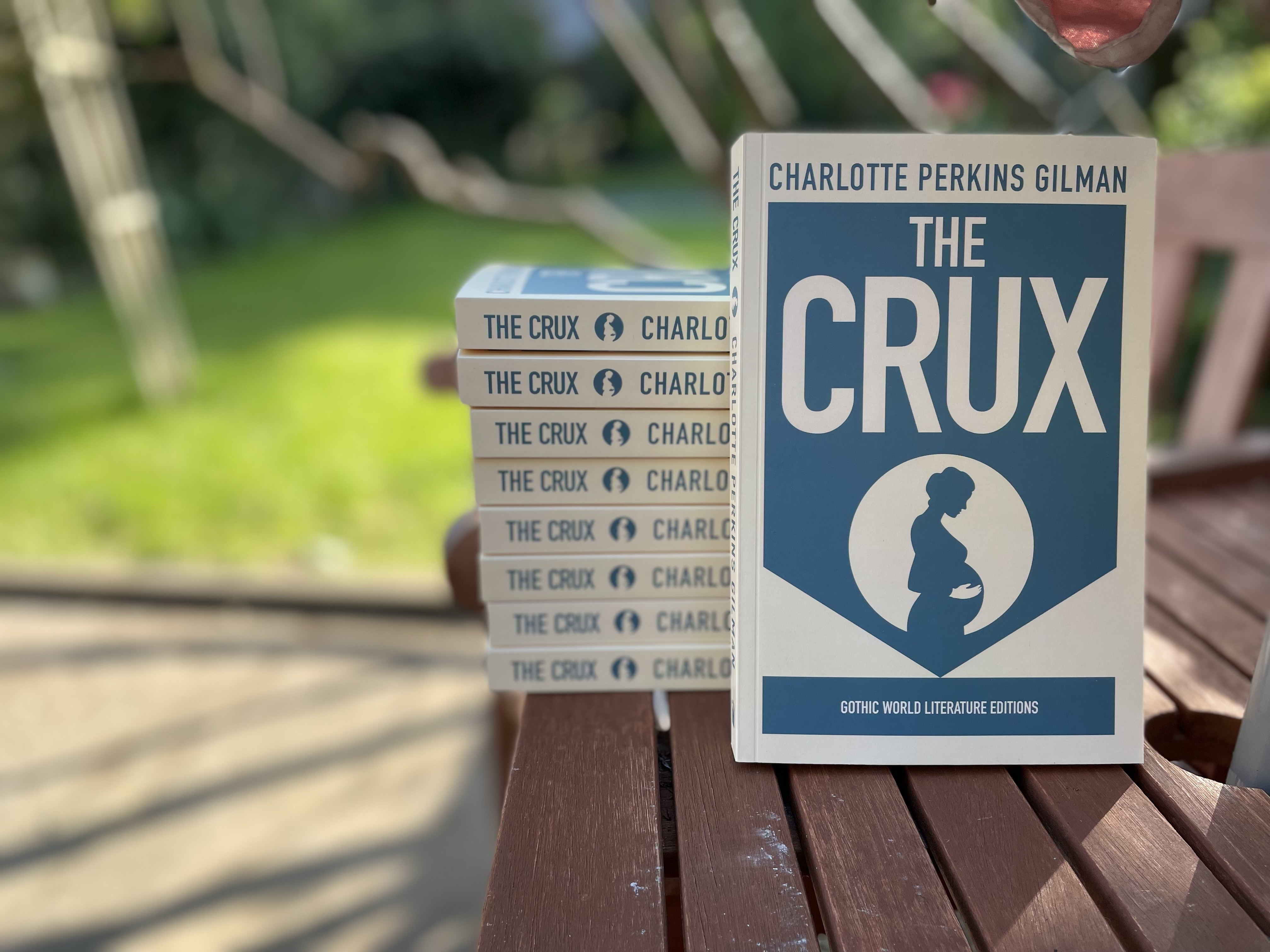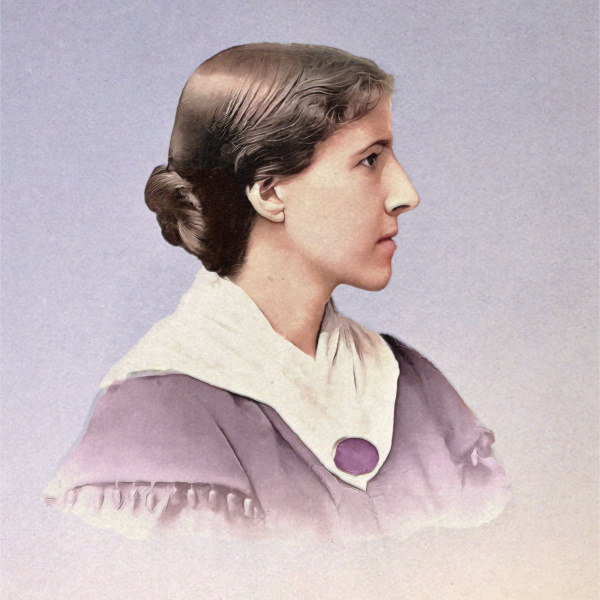Charlotte Perkins Gilman was not known for her softness. An eclectic, controversial woman, the majority of her written canon is ladened with political, social and emotional ideology. She had a noticeably unconventional life for her time - involving multiple marriages, a same-sex relationship, a plethora of jobs and the adoption of co-parenting techniques - much of which is mirrored in her writing. Although simple on the exterior, The Crux is not a predictable or harmless love story. Despite lacking the ghoulishness of The Giant Wisteria or the psychological tension of The Yellow Wallpaper, The Crux was written with a fundamental goal: to promote the education and adoption of eugenic theory within female-male relationships in America.
Considering Gilman’s mainstream position in history as a social activist and feminist, this realisation can present a shock. While writing the introduction, I found myself re-reading passages over and over to ensure I’d interpreted her words correctly - why, as a supposedly liberal woman, would she champion genetic selection as society’s only way forward? It is for this reason, perhaps, that The Crux has been omitted from many academic mentions of her work. Its primary message is an uncomfortable pill to swallow next to work on female economic independence or re-structuring marriage frameworks. However, the existence of this ideology does not render it a useless or disposable aspect to her overarching body of work - contrarily, it is a novel that holds huge significance with reference to Gilman’s own time and our own.
Reading The Crux can teach us much. It provides an insight into the genetic ideologies circulating America at the time, but also an indication of white-feminism’s involvement in this particular strain of thought; it prompts us to re-wire our understanding of the women’s movement historically, and to re-consider its essential roots. Uncomfortable? Yes. Important? Undoubtedly. If there’s one thing I learned from reading, editing and writing about this novel, it’s that the history of feminism is more complicated, segregated, discriminatory and selective than many of us are aware.
A novel’s vitality often depends on its character basis. Do we empathise with them? Can we see them, or hear them, in our minds whilst reading? Are they emotionally and psychologically nuanced?
As readers, the way we interact with and interpret characters - whether protagonists, antagonists or background voices - can solidify a novel’s sticking power. A baseless character has little place in the world of literature: as humans, we crave realism, intrigue and inner impact. The Crux, in many aspects, fulfils these wishes expertly through the persona of Morton Elder.
Charlotte Perkins-Gilman is largely remembered for her opinions and theories as opposed to her imagined dramatis personae. Both past and present, critics have labelled her books, academic and fictional, as lacking in character vitality - it is within her odd frameworks, tense storylines and strange constructions that we feel our interest tugged. As a woman strongly linked to social and political ideologies, this is expected; her work was largely written to present various messages, regardless of literary prowess.

Yet The Crux holds a quiet, hidden gem. When editing the text, I found myself drawn to the protagonist’s primary love interest - Morton Elder. Morton’s character is painfully human; a promising, charismatic young man, his hopes for a bright future with Vivian Lane are dashed by mere biology. Divergent from much character composition contemporary to Gilman, Morton is given the hamartia of disease. Afflicted with syphilis - a life-threatening sexual infection prior to the discovery of now-conventional treatment - his hopes of marriage and a happy life are thrown into turmoil. He serves as a warning present during the time, but also as a warning within Gilman’s own philosophies; anything biologically damaging to the national stock, no matter how kind or promising, must be omitted from future consideration.
Thus Morton’s character is more than a simple construction. He is personally, socially and historically significant. As a reader, I was struck with both empathy and the reminder of difference; a reminder that, for many, disease was the end-all in the past, an issue we are closer to eradicating now. Yet, in true Gilman style, Morton also holds a lesson. In terms of Gilman’s contemporary social conditions, he presents as a metaphor for social-ills of the time; disease, un-considered sex and the dangers of mixing ‘bad’ crops with ‘good’. In contrast to Vivian - the innocent, intelligent woman who is destined to be taught the ‘right’ way of life - he is a stain on future generations, but also a stain to himself.

